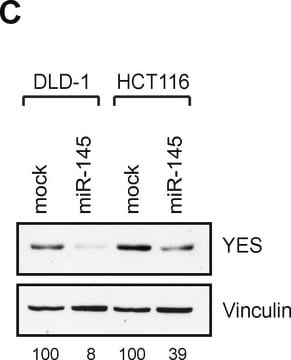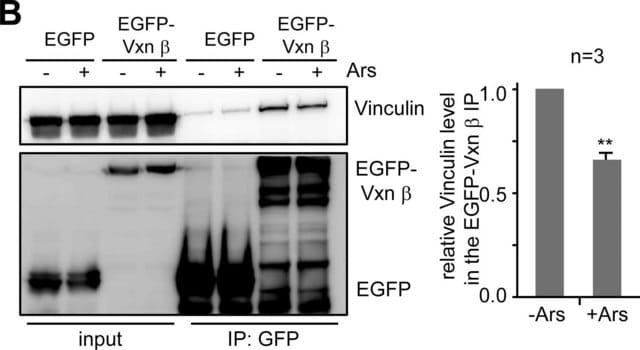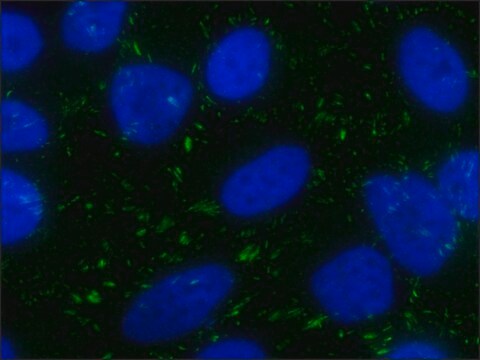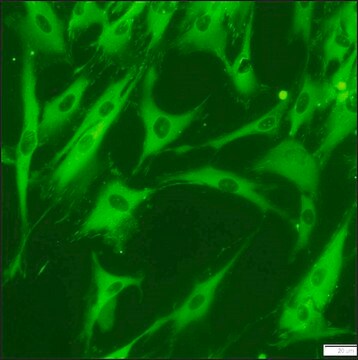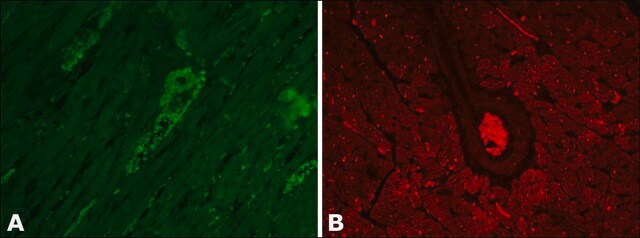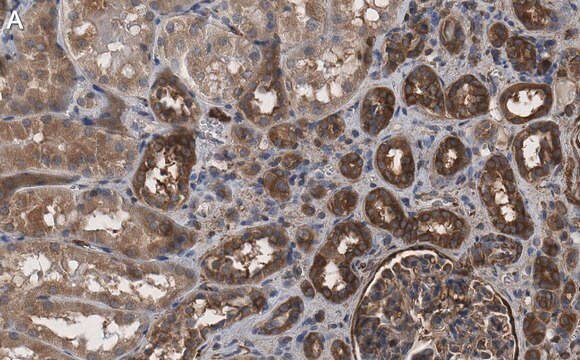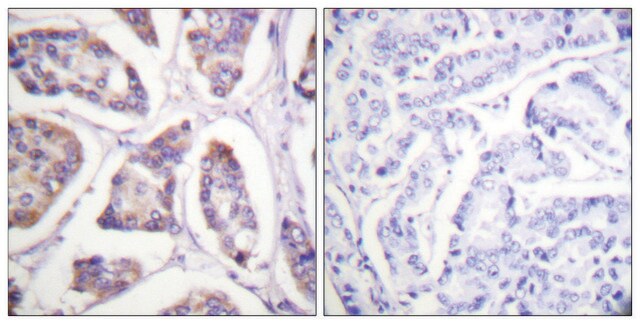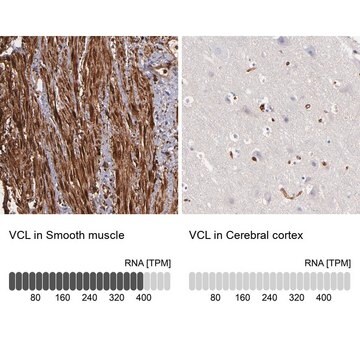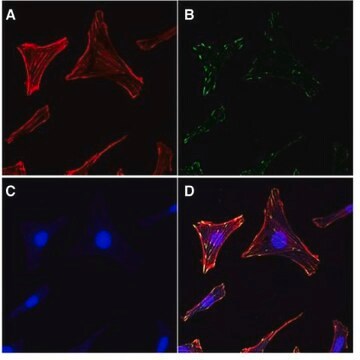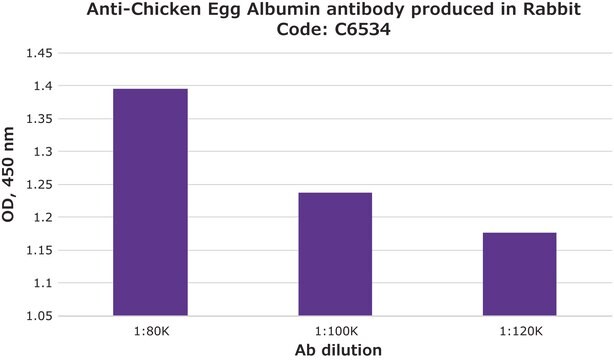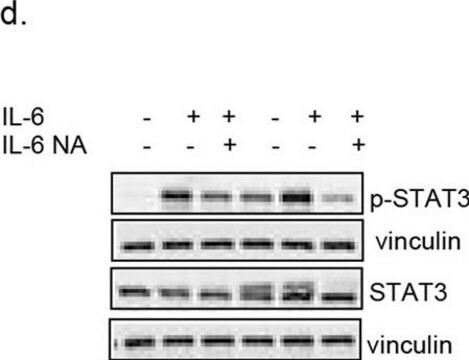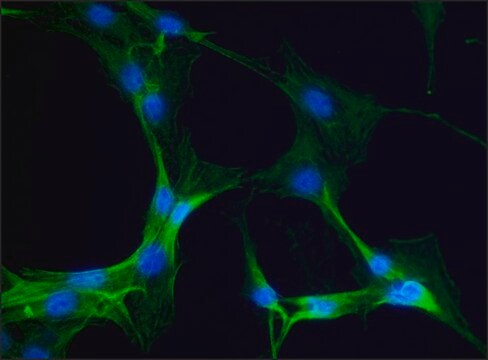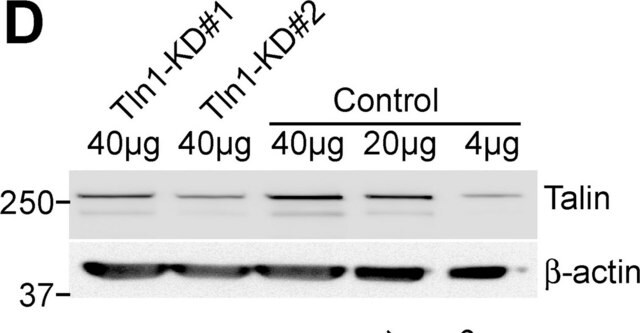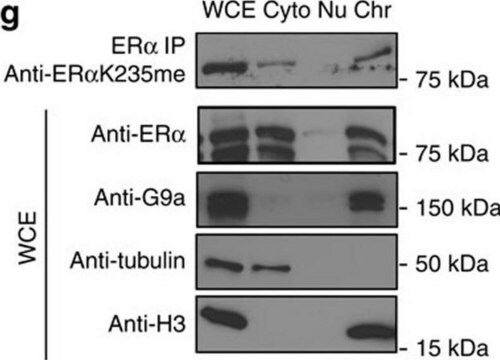Kluczowe dokumenty
V4505
Anti-Vinculin Antibody
mouse monoclonal, VIN-11-5
Synonim(y):
Vinculin Antibody Sigma
About This Item
Polecane produkty
Nazwa produktu
Monoclonal Anti-Vinculin antibody produced in mouse, clone VIN-11-5, ascites fluid
pochodzenie biologiczne
mouse
Poziom jakości
białko sprzężone
unconjugated
forma przeciwciała
ascites fluid
rodzaj przeciwciała
primary antibodies
klon
VIN-11-5, monoclonal
masa cząsteczkowa
antigen 116 kDa
reaktywność gatunkowa
bovine, human, chicken, mouse
metody
indirect immunofluorescence: 1:50 using cultured chicken fibroblasts
microarray: suitable
western blot: suitable
izotyp
IgG1
numer dostępu UniProt
Zastosowanie
research pathology
Warunki transportu
dry ice
temp. przechowywania
−20°C
docelowa modyfikacja potranslacyjna
unmodified
informacje o genach
human ... VCL(7414)
mouse ... Vcl(22330)
Opis ogólny
Specyficzność
Immunogen
Zastosowanie
- western blotting.
- immunofluorescence.
- immunocytochemistry.
Działania biochem./fizjol.
Inne uwagi
SAB4200729 Anti-Vinculin antibody, Mouse monoclonal
clone VIN-11-5, purified from hybridoma cell culture
Oświadczenie o zrzeczeniu się odpowiedzialności
Nie możesz znaleźć właściwego produktu?
Wypróbuj nasz Narzędzie selektora produktów.
polecane
Kod klasy składowania
13 - Non Combustible Solids
Klasa zagrożenia wodnego (WGK)
WGK 1
Temperatura zapłonu (°F)
Not applicable
Temperatura zapłonu (°C)
Not applicable
Wybierz jedną z najnowszych wersji:
Masz już ten produkt?
Dokumenty związane z niedawno zakupionymi produktami zostały zamieszczone w Bibliotece dokumentów.
Klienci oglądali również te produkty
Nasz zespół naukowców ma doświadczenie we wszystkich obszarach badań, w tym w naukach przyrodniczych, materiałoznawstwie, syntezie chemicznej, chromatografii, analityce i wielu innych dziedzinach.
Skontaktuj się z zespołem ds. pomocy technicznej